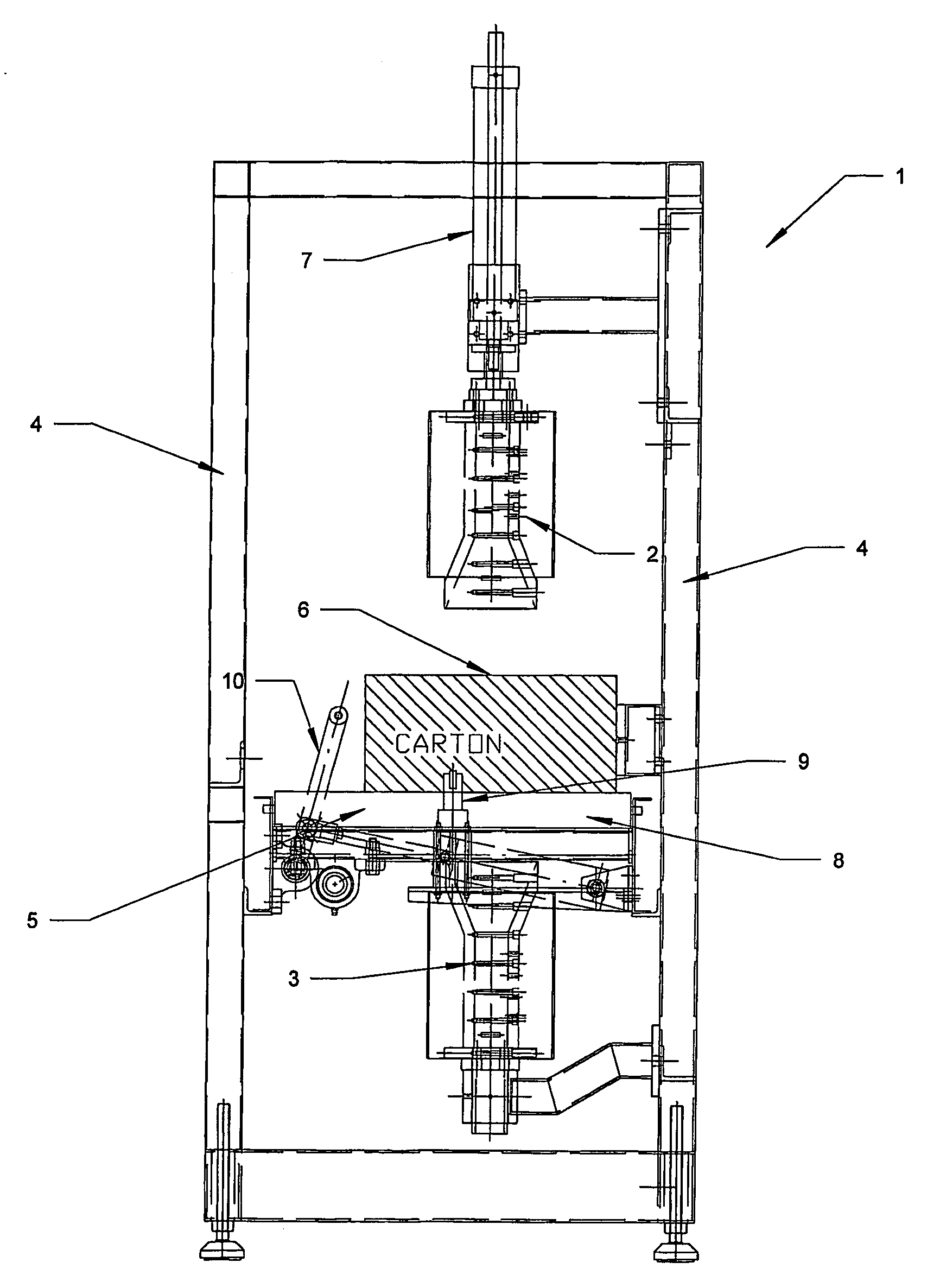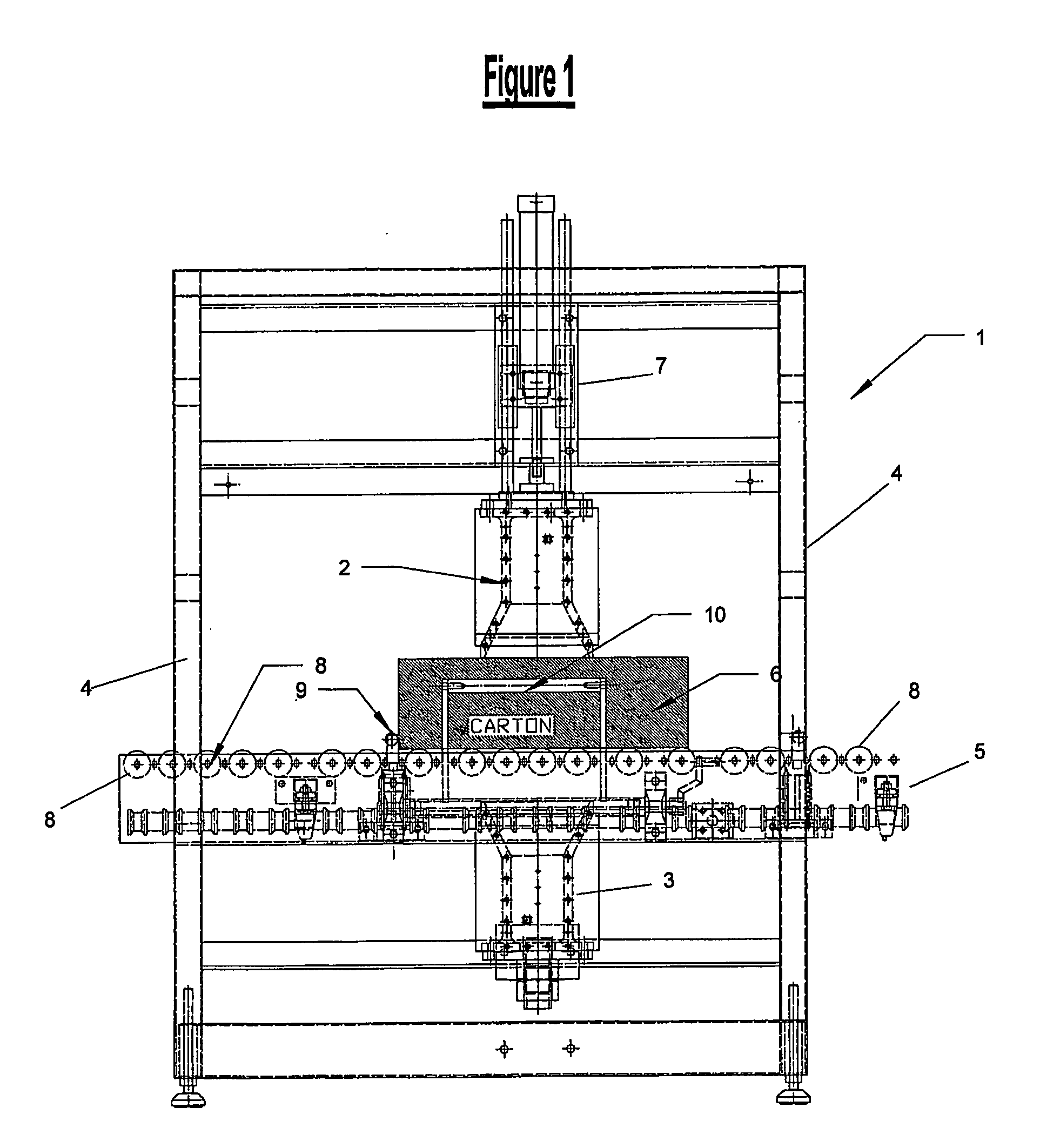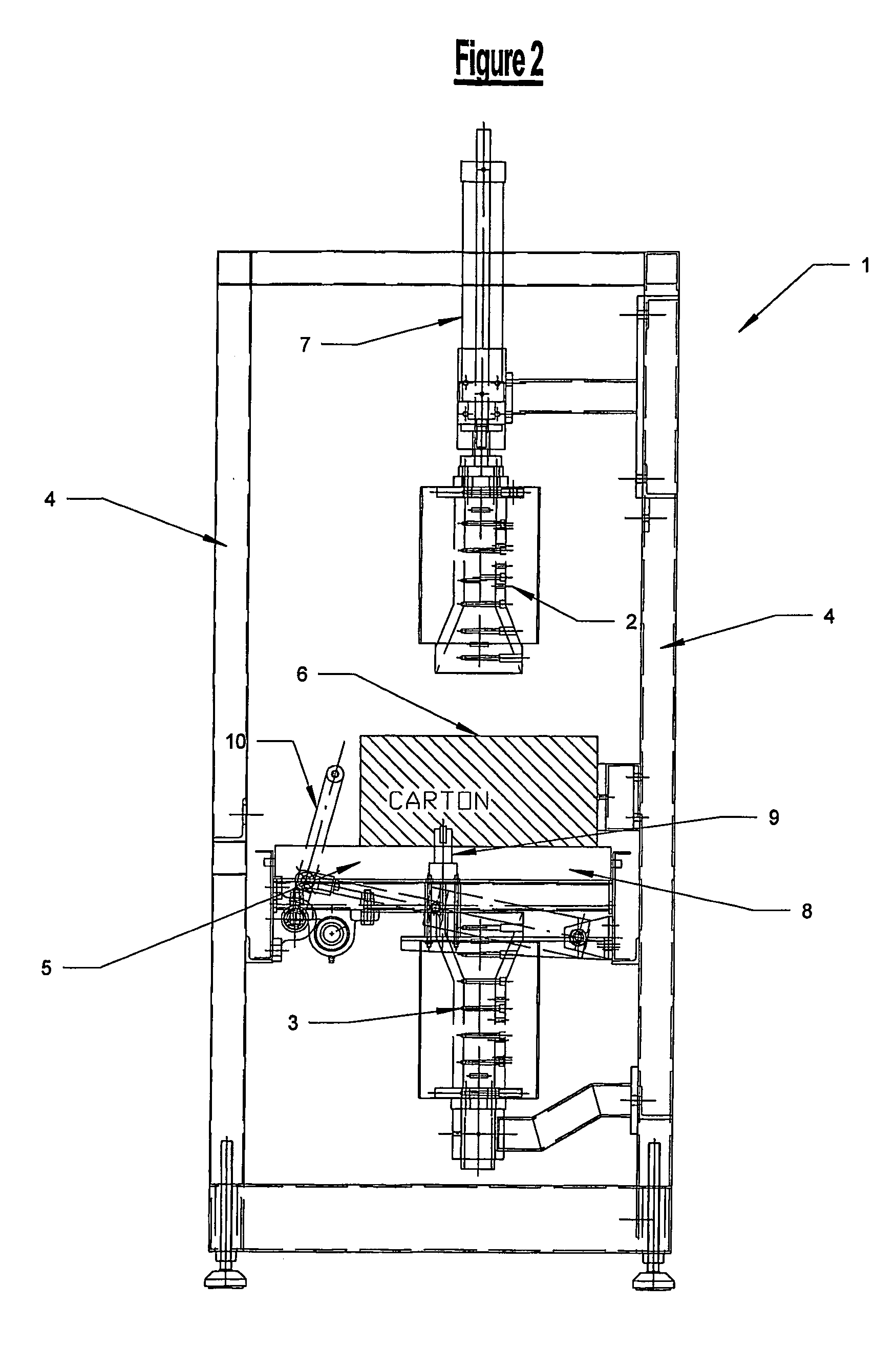Bacterial growth poses a serious
health risk for food which is not maintained at a safe temperature during the different stages in the supply chain, typically including the end of
production line packaging, storage on the manufacturers' premises, transit, and arrival at the retailer.
Such a procedure is
time consuming, difficult to automate and detrimental to the product tested.
Furthermore, as frozen
food products are often transported between several locations and storage sites such as in the export of frozen meat from a remote country such as New Zealand, this invasive
temperature testing procedure would need to be repeated on numerous occasions.
It is thus unsurprising that such invasive
temperature testing procedures are sometimes omitted in practice with the
resultant risks that foodstuffs may be either insufficiently frozen (with the corresponding health dangers) or alternatively that time and energy is wasted due to excessive freezing.
However, the interaction of microwaves with
organic matter is also temperature dependant.
However, the accuracy of such a
system may be undermined by a number of factors.
Without eliminating or otherwise accounting for such potential error sources such as alternate beam paths, the detector will receive a false reading, resulting in incorrectly calculated
sample temperature.
This technique has the drawbacks of; the physical and practical inconvenience of using a
saline bath to minimise reflection and
refraction; the requirement for a
reference image to permit the subtraction of images to give a
temperature measurement, and a measurement time of at least several seconds.
However, one of the main problems encountered in
microwave frequency
radiometry resides in the matching of the antenna in respect of the material the temperature of which one wishes to know.
Indeed, the antenna used has a
reflection coefficient Ro and, as a result, the antenna is never perfectly matched, given that the objects to be measured generally have different configurations, sizes and properties.
However, for applications requiring
temperature measurement of products in systems with a high
throughput rate (such as in a meat
processing plant), the method of Steers et al suffers from three serious disadvantages: 1. a single temperature measurement requires
sufficient time for the reference material to heat measurably—requiring seconds or even tens of seconds and thus limiting
throughput; 2. the use of a
microwave transmitter with sufficient power to measurably heat the reference material necessitates appropriate shielding structures which are generally inconvenient or impractical to implement in automated
food processing plants, and there is no provision disclosed for cooling the
reference sample to facilitate rapid repeat temperature measurements.
Irrespective of a possible resolution of the first two disadvantages listed above, the third
disadvantage would still prevent practical temperature measurements in a multi-
sample temperature measurement
scenario.
Whilst this
system may be suitable for measuring samples small enough to fit in the
enclosure, this
system does not lend itself to multi-sample measurements in high
throughput applications.
A housing completely enclosing each sample is an unavoidable requirement as the
microwave measurements would otherwise be affected by stray environmental electromagnetic
radiation.
Such a requirement would necessitate complex and costly mechanical systems to repeatedly manipulate samples from a
production line into a measurement housing, seal the
enclosure, rapidly perform the temperature measurement, extract the sample and return to the production line.
It can be seen therefore that none of the above prior art provides a practical, non-invasive means suitable for incorporation in rapid sample throughput systems for determining the temperature of chilled or frozen produce or other water-rich substances.
 Login to View More
Login to View More  Login to View More
Login to View More 


